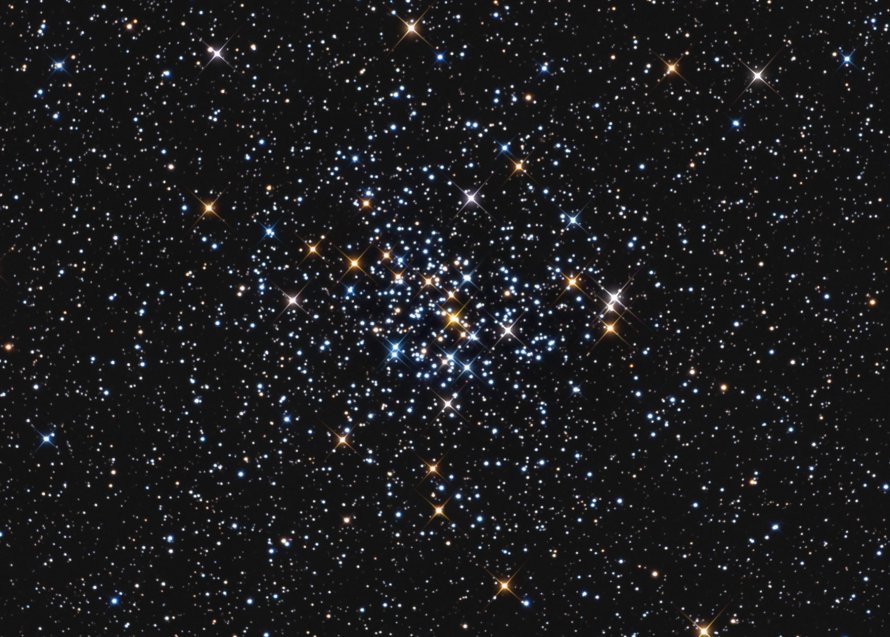M37 (NGC 2099)
Messier 37 (NGC 2099) is an open cluster located in the constellation Auriga, in the Perseus Arm of the Milky Way Galaxy in the Local Group of galaxies. M37 is 4500 light years away from Earth.
M37 is best viewed during winter, is magnitude 6.2, and can be viewed with binoculars. M37 is 24' in apparent size. For reference, the full moon is 30'.
Observing difficulty: Easy
- Name:
- Type:
- open cluster
- Constellation:
- Auriga
- NGC or IC:
- NGC 2099
- Magnitude:
- 6.2
- Viewing:
- binoculars
- Size:
- 24'
- Distance (light years):
- 4500 LY
- RA:
- 5h 52.4m
- Dec:
- 32 33'
- Season:
- winter
- Milky Way location:
- Perseus Arm
- Galaxy group:
- Local Group
- Messier Marathon #:
- 18
* The naked eye can see up to magnitude ~7-8 objects under ideal dark sky conditions.
An Intricate Open Cluster in Auriga
Messier 37, also known as M37 or NGC 2099, is a stunning open star cluster situated in the constellation of Auriga. As one of the most prominent open clusters in the night sky, M37 has become a frequent observational target for both amateur and professional astronomers. This article delves into the details of Messier 37, including its brightness, location, and observational tips for star gazers.
Historical Background
M37 was discovered by Italian astronomer Giovanni Batista Hodierna before 1654 and later added to Charles Messier's famous catalog in 1764. It is the richest open cluster in the constellation Auriga, which also hosts the smaller and more compact open clusters M36 and M38.
Physical Properties and Magnitude
Located approximately 4,500 light-years away from Earth, Messier 37 is believed to be about 347 million years old. It's home to over 500 identified stars, with the majority being main sequence stars similar to our Sun. M37's most luminous member, however, is a red giant of magnitude 8.5 at its very center. The cluster spans about 20 to 25 light-years across and shines with an overall apparent magnitude of 5.6, making it the brightest of the three Messier objects in Auriga.
Astronomical Significance
Messier 37 plays a significant role in the field of astronomy, particularly in studies concerning stellar formation and evolution. The high number of main sequence stars makes M37 an ideal location to study the long-term evolution of stars like our Sun. Additionally, the presence of a red giant in the cluster's center provides a glimpse into the future of lower-mass stars.
Finding and Observing M37
Located in Auriga, M37 is reasonably easy to locate. It's found in the vicinity of the bright star Capella. From Capella, move southeast, towards the foot of Gemini, to find M37 along with its companion clusters M36 and M38. M37 lies approximately in the center of a triangle formed by the bright stars Capella, Alnath, and El Nath.
Given its brightness, M37 can be seen as a hazy patch to the naked eye under excellent dark sky conditions. However, binoculars or a small telescope significantly enhance the viewing experience. Under magnification, the cluster transforms into a vibrant splash of stars against the black backdrop of space, making it a delightful sight for any stargazer.



